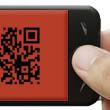By Amy Vale
It seems like mobile codes are all the rage
now, they are everywhere and everyone seems to be jumping on board the code
train. QR Codes are one of the big items for the 2012 mobile marketing
ecosystem, but this doesn’t mean that everyone understands what they are and
how to take advantage of their marketing prowess. The idea essentially is to
use your mobile as a device with a downloaded ‘reader’ to scan a bar code,
which directs you to more information about the brand or product.
We are seeing barcodes in print media, for
example in magazines and newspapers alongside adverts and other marketing
material. We are also seeing barcodes popping up in retail stores, where
consumers are encouraged to scan QR Codes at the shelf to help provide
information that will close the sale.
QR codes have been gaining momentum since
about 2010, and the broader public is slowly but surely learning how they work
and beginning to appreciate their uses. For a consumer, they offer an easy way
to access an app or a quick way to access more information about a product. For
example, standing in the shopping aisle, if a shopper wants to find out more
about a product, they traditionally would google it on their smartphone. With
QR codes, they simply scan the code and get the information they need. For a brand,
it offers a way to direct the consumer to the information they want, not what
pops up first on google when they search. It also offers a new medium for
traditional marketing tools such as competitions and offers.
Along with the benefits, QR codes do come
with challenges for the brand and publishers need to be aware of this. First,
we need to get the consumer to scan the ad. This requires a willingness to scan
and also knowledge on how to scan. For many people still, QR codes are a
confusing, bizarre pattern. Publishers play a key role in educating the
consumer in how to use QR codes. Secondly, once the consumer has scanned the
code, we need to keep the consumer engaged. This means custom mobile landing
pages, and quick and convenient ways for the consumer to get the information
they are looking for.
To help you navigate the challenges and get
the most out of your QR codes, we have compiled our top 4 do’s when
incorporating QR codes into your marketing strategy.
1.
Mobile bar codes should be integrated
into your overall strategy alongside traditional advertising, mobile ads and an
app campaign.
2.
You want to aim to give the user access to content
that goes beyond the space that they are scanning from, and definately link to
mobile formatted content.
3.
Update the code with new content regularly
and dynamically, for example, it is effective to make use of a mobile bar code
over the holiday sales, but remember that consumers will continue to scan codes
throughout the year so consider things such as daily or weekly specials if
you’re in the retail space.
4.
Help your consumers to access to codes. In
a print ad for example, position them in a way that makes it easy to see scan. Include
copy next to the code, explaining it and how it is used and make sure the QR
code is easy to scan. Use a URL shortener such as bit.ly to condense long codes
so the QR code will be less complex.




